
On 19 Jun 1906, Ernst Chain was born, German-born British biochemist who shared the 1945 Nobel Prize for Physiology or Medicine with Sir Alexander Fleming and Howard Walter Florey (later Baron Florey) for their work on penicillin. Today's book pick is: The Mold in Dr. Florey's Coat: The Story of the Penicillin Miracle, by Eric Lax. Although Nobel laureate Alexander Fleming is well-known for his observation of the antibiotic qualities of a penicillium mold, it was the relatively little-known work of Florey and Chain that made the vital contribution of solving immense technical problems of the large-scale production of penicillin. The curious title refers to the way in which these scientists, working in Oxford during WW II, planned in the event of invasion to destroy all their work to prevent it from falling into enemy hands, yet rubbed their jackets with penicillium spores to carry the secret with them if they fled. This piece of medical research history is a fascinating, informative and important story, making the book one that everybody will find to be rewarding reading.
It is available from Amazon, typically about New from $12.07. Used from $2.01. (As of earlier time of writing - subject to change.)
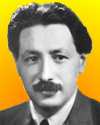 | Science, as long as it limits itself to the descriptive study of the laws of nature, has no moral or ethical quality and this applies to the physical as well as the biological sciences. |
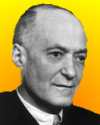 | Chemistry: that most excellent child of intellect and art. |
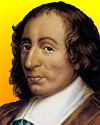 | On se persuade mieux, pour l’ordinaire, par les raisons qu’on a soi-même trouvées, que par celles qui sont venues dans l’esprit des autres. We are generally more effectually persuaded by reasons we have ourselves discovered than by those which have occurred to others. |
| Before you look at today's web page, see if you can answer some of these questions about the events that happened on this day. Some of the names are very familiar. Others will likely stump you. Tickle your curiosity with these questions, then check your answers on today's web page. | |
| Births | |
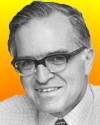 | On 19 Jun 1922, the son of a famous Nobel-winning Danish physicist was born. They both contributed to the building of the atomic bomb during WW II. His father had won the Nobel Prize in Physics in 1922. His son shared a Nobel Prize for Physics in 1975, “for the discovery of the connection between collective motion and particle motion in atomic nuclei and the development of the theory of the structure of the atomic nucleus based on this connection.” What is the family name of these scientists? |
 | On 19 Jun 1623, Blaise Pascal was born, a French mathematician, physicist and child prodigy. He laid the foundation for the modern theory of probabilities. He invented the syringe and hydraulic press. He is best known for his work in hydrodynamics. He died at the young age of 39 having been sickly and physically weak through life. Autopsy showed he had been born with a deformed skull. What physical quantity has a unit named for him, and his work in that field? |
| Deaths | |
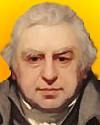 | Sir Joseph Banks (1743-1820) was a British explorer and naturalist, known for his promotion of science. As an independent naturalist, Banks participated in a voyage to Newfoundland and Labrador in 1767. He successfully lobbied to be included on what was to be James Cook’s first great voyage of discovery, on board the Endeavour (1768-71). King George III appointed Banks adviser to the Royal Botanic Gardens at Kew. Banks established his London home as a scientific base (1776) with natural history collections he made freely available to researchers. He was also a long-time president of which British scientific society? |
| Events | |
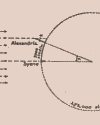 | In 240 BC, Eratosthenes, a Greek astronomer and mathematician, conducted an experiment comparing the length of shadows cast by sticks at two distant locations. As director of the great library of Alexandria, he had read in a papyrus book that in Syene, approaching noon on the summer solstice, the longest day of the year, shadows of temple columns grew shorter. At noon, they were gone. The sun was directly overhead. However, a stick in Alexandria, far to the north, could cast a pronounced shadow. What significant measurement was he able to make by taking measurements, and application of geometry, based on this idea? |
 | In 1987, the U.S. Supreme court overturned a 1981 state “Creationism Act.” The state law required that if evolution was taught in a state public elementary or secondary schools, it must be accompanied by instruction in “creation science.” The court found the Act unconstitutionally endorsed religion, and clearly stated that “Forbidding the teaching of evolution when creation science is not also taught undermines the provision of a comprehensive scientific education.” Which was the state had tried to require Creationism instruction along with evolution? |
 | In 1934, Robert R. McMath at the McMath-Hulbert Observatory, Pontiac, Michigan used a spectroheliokinematograph to make moving pictures of the Sun. What this movie captured was different from any previously made, which were of eclipses. What did this movie of the Sun show? |
Fast answers for the previous newsletter for June 18: quasar • Alphonse Laveran • canals • ionosphere • Africa (as in Africanized honey bees) • fewer parts, simpler construction, safer, more reliable, and greater power • the decade including the year 1981.
 If you enjoy this newsletter, the website, or wish to offer encouragement or ideas, please send feedback by using your mail reader Reply button.
If you enjoy this newsletter, the website, or wish to offer encouragement or ideas, please send feedback by using your mail reader Reply button. Your click on a Facebook, StumbleUpon, or other social button on the site webpages is also a welcome sign of appreciation. Thank you for using them.
© This newsletter is copyright 2020 by todayinsci.com. Please respect the Webmaster's wishes and do not put copies online of the Newsletter — or any Today in Science History webpage. (If you already have done so, please remove them. Thank you.) Offline use in education is encouraged such as a printout on a bulletin board, or projected for classroom viewing. Online, descriptive links to our pages are welcomed, as these will provide a reader with the most recent revisions, additions and/or corrections of a webpage. For any other copyright questions, please contact the Webmaster by using your mail reader Reply button.
--
If you do not want to receive any more newsletters, Unsubscribe
To update your preferences and to unsubscribe visit this link
Executive Real Estate Business Class
-
"It was like a man with wings. It wasn't like anything you'd see on TV or in a monster movie." ...
About the publisher
Search This Blog
Blog Archive
-
▼
2021
(585)
-
▼
June
(64)
- On This Day for June 30 - Night of the Long Knives...
- Newsletter for Wednesday 30 June.
- On This Day for June 29 - London's Globe Theatre d...
- Newsletter for Tuesday 29 June.
- On This Day for June 28 - Assassination of Archduk...
- Newsletter for Monday 28 June.
- On This Day for June 27 - Yen made official moneta...
- Newsletter for Sunday 27 June.
- On This Day for June 26 - Opening of CN Tower, Bab...
- Newsletter for Saturday 26 June.
- On This Day for June 25 - Korean War begun, Antoni...
- Newsletter for Friday 25 June.
- On This Day for June 24 - Russia invaded by Napole...
- Newsletter for Thursday 24 June.
- On This Day for June 23 - Battle of Bannockburn, C...
- Newsletter for Wednesday 23 June.
- On This Day for June 22 - Mutiny against Henry Hud...
- Newsletter for Tuesday 22 June.
- On This Day for June 21 - Japanese forces defeated...
- Newsletter for Monday 21 June.
- On This Day for June 20 - Casket Letters found, Ho...
- Newsletter for Sunday 20 June.
- Tonight at 8/7c: Watch ‘Fight the Power’
- On This Day for June 19 - Rosenbergs executed for ...
- Newsletter for Saturday 19 June.
- On This Day for June 18 - War of 1812 begun, Sir P...
- Newsletter for Friday 18 June.
- On This Day for June 17 - Arrest of O.J. Simpson, ...
- Newsletter for Thursday 17 June.
- On This Day for June 16 - First woman in space, Jo...
- Newsletter for Wednesday 16 June.
- On This Day for June 15 - Magna Carta sealed by Ki...
- Newsletter for Tuesday 15 June.
- On This Day for June 14 - First prisoners at Ausch...
- Newsletter for Monday 14 June.
- On This Day for June 13 - Historic meeting between...
- Newsletter for Sunday 13 June.
- On This Day for June 12 - Election of Boris Yeltsi...
- Newsletter for Saturday 12 June.
- Listen Now! Blindspot: Tulsa Burning Podcast
- On This Day for June 11 - Oklahoma City bomber exe...
- Newsletter for Friday 11 June.
- On This Day for June 10 - First “witch” hanged in ...
- Newsletter for Thursday 10 June.
- On This Day for June 9 - Landslide reelection vict...
- Newsletter for Wednesday 9 June.
- On This Day for June 8 - Michelangelo's David inst...
- Newsletter for Tuesday 8 June.
- Action required: Update your HistoryExtra password
- On This Day for June 7 - Lateran Treaty ratified, ...
- Newsletter for Monday 7 June.
- On This Day for June 6 - Normandy Invasion begun, ...
- Newsletter for Sunday 6 June.
- On This Day for June 5 - Start of the Six-Day War,...
- Newsletter for Saturday 5 June.
- On This Day for June 4 - Dunkirk evacuation ended,...
- Newsletter for Friday 4 June.
- Tonight: ‘Alone’ Returns at 9:30/8:30c
- On This Day for June 3 - Pro-democracy protest in ...
- Newsletter for Thursday 3 June.
- On This Day for June 2 - Elizabeth II crowned quee...
- Newsletter for Wednesday 2 June.
- On This Day for June 1 - Debut of CNN, Morgan Free...
- Newsletter for Tuesday 1 June.
-
▼
June
(64)
-
Blogroll
-
About
HistoryFact










0 comments:
Post a Comment